Author: UkuriaOC, CryptoVizArt, Glassnode; Compiler: Wu Baht, Golden Finance
Abstract:
On average, BTC investors have experienced relatively small unrealized losses compared to previous cycles, indicating that overall conditions are relatively favourable.
However, unrealized losses for short-term holders remain quite high, indicating that they are the primary risk group.
Profit and loss activity remains very light, and key indicators such as sell-side risk ratios suggest that volatility may increase in the near term.
Market Down
Over the past six months, price action has been stagnant and investor sentiment has been low. However, significant changes have occurred over the past three months, with downward pressure intensifying, causing the market to experience its worst decline of the cycle.
From a macro perspective, however, spot prices are currently around 22% below all-time highs, a relatively small decline compared to historical bull markets.
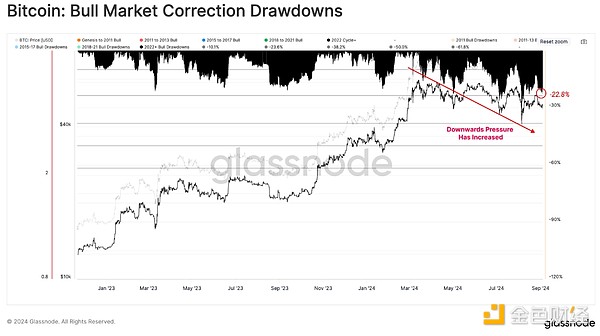
Current market pressure< /h2>
As downward pressure on prices increases, it would be prudent to assess the unrealized losses held by investors to assess the financial stress they are experiencing.
Looking at the broader market, unrealized losses remain at historically low levels. Total unrealized losses represent just 2.9% of Bitcoin’s market capitalization, which is historically low.
This shows that even as prices continue to fall, overall investment are still relatively profitable.
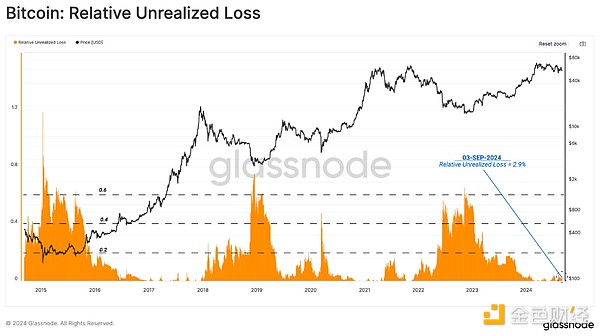
If we take the ratio of total unrealized profits to total unrealized losses, we can see that profits are still 6 times greater than total losses, supporting the above observation. The ratio is higher than the current value on about 20% of trading days, highlighting the surprisingly solid financial position of the average investor.
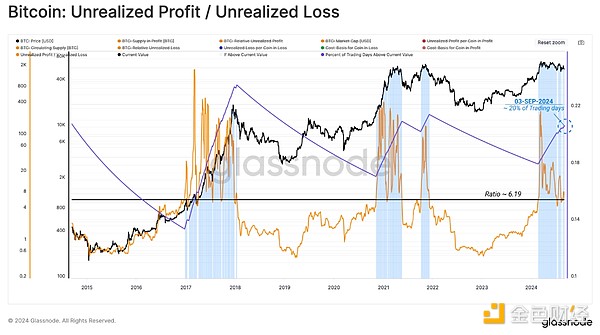
Short-term concerns
The short-term holder group, which represents the new demand in the market, seems to bear most of the market pressure. Their unrealized losses dominate, and their size has continued to increase over the past few months.
However, even for this group, the size of their unrealized losses relative to market capitalization has not yet entered a full-blown bear market, closer to the tumultuous 2019.
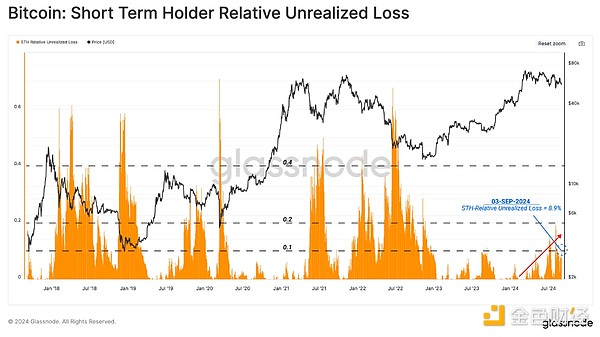
We can pass the evaluation The above observation is supported by the STH MVRV ratio, which has fallen below the breakeven value of 1.0. The indicator was trading at similar levels to August 2023 during the recovery rally following the FTX failure.
This tells us that The average new investor holds an unrealized loss. In general, the market is expected to weaken further before spot prices recover to the STH cost basis of $62,400.
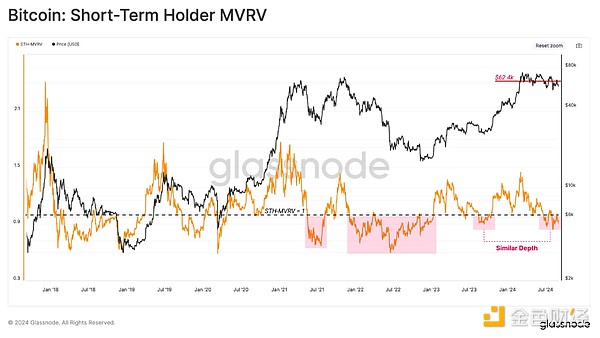
We can increase confidence in this assessment by examining a subset of the STH investor base. Currently, all age groups in the STH cohort hold unrealized losses with the following average cost basis:
1d -1w: $59.0k (red)
1w-1m: $59.9k (orange)< /span>
1m-3m: $63.6k (blue)
3m-6m: $65.2k (purple)

Investor reaction
Assessing unrealized losses can provide insight into market investors the pressure faced. We can then supplement this analysis with realized profits and losses (lock-ins) to better understand how these investors respond to this pressure.
Starting with realized profits, we can see that there was a significant decline after the all-time high of $73,000 , suggesting that most tokens spent since then have locked up smaller and smaller amounts of profit.
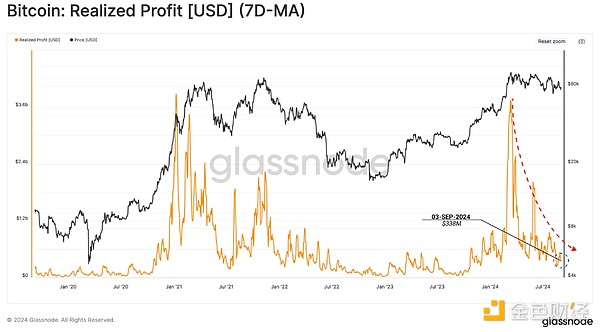
Shifting to realized losses, we note an increase in loss events and volume is increasing as the market's downward trend progresses Rise to a higher level.
Lossing events have not yet reached the levels seen during the mid-2021 sell-off or 2022 bear market Extreme levels. However, the gradually higher trend does suggest that some fear is creeping into investor behavior patterns.
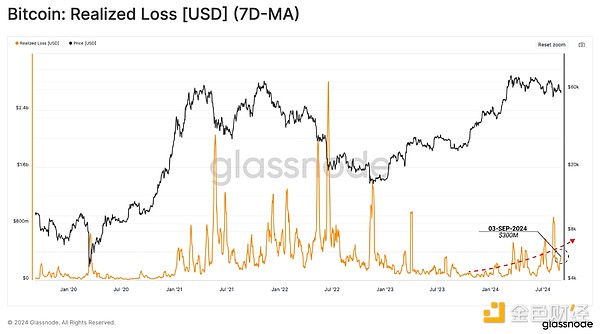
From a sell-side risk ratio perspective, we can see that total realized profits and losses are relatively small compared to the overall market size. We can interpret this indicator in the following framework:
High values indicate investors The profit or loss from spending a token is large relative to its cost basis. This situation indicates that the market may need to re-find its balance and often follows high-volatility price action.
A low value indicates that most tokens are spending relatively close to their break-even cost base, indicating that some level of balance has been achieved. This situation typically indicates that "profit and loss" has been exhausted within the current price range, often describing a low-volatility environment.
Sell-side risk ratios have dropped to lower levels, indicating that most chains The tokens traded on are priced very close to their original acquisition prices. This indicates a gradual saturation of profit-making and loss-making activity within the current price range.
Historically, this suggests expectations for increased volatility in the near term , similar to the situation in 2019.
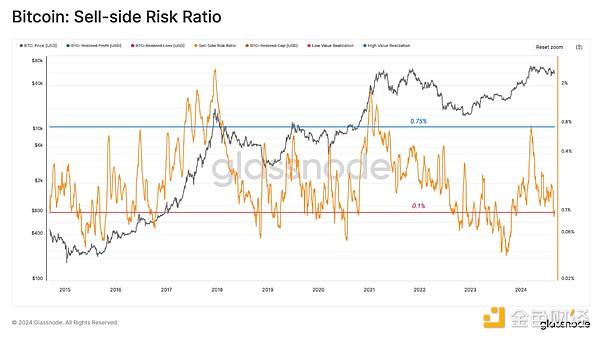
Navigating the Cycle
In downtrends, patience and hold become the dominant market dynamics. A large number of long-term holder tokens were spent to earn profits on March ATH, creating a net oversupply.
Recently, LTH has slowed down the pace of profit-taking, and the supply accumulated during the ATH rise has gradually matured For long-term holders. However, historical examples of LTH supply increasing like this suggest that this usually occurs during a transition to a bear market.
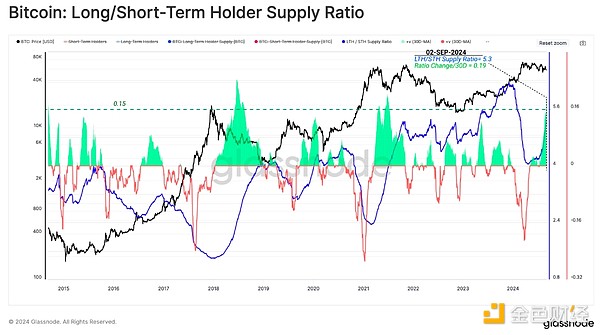
Combining the above observations, we note that As tokens mature and transform into long-term holders, new demand investors Wealth held has declined in recent months.
The percentage of wealth held by new investors does not reach the previous ATH allocation event The high limit experienced during the period. This may suggest that the 2024 peak is more in line with the mid-cycle highs of 2019 rather than the macro highs of 2017 and 2021.

To summarize our analysis, we will refer to a simplified framework for thinking about historical Bitcoin market cycles using key on-chain pricing levels:
Deep Bear Market: The price is lower than the actual price. (Red)
Early Bull Market: Prices trade between the actual price and the true market mean. (Blue)
Enthusiastic Bull: Price trades between ATH and the true market mean. (orange)
Euphoric Bull Market: Prices are higher than the ATH of previous cycles. (Green)
Within this framework, price action remains within an enthusiastic bull market structure, which is a constructive observation. However, If there is a localized downturn, the $51,000 pricing level remains a key area of focus and must be maintained for further appreciation.
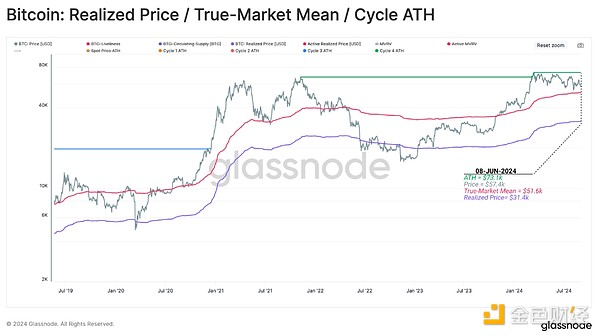
Summary
Bitcoin is currently only down 22% from its historical high, which is much smaller than the previous cycle.Ordinary BTC investors are still making huge profits, highlighting the soundness of their positions.
Nevertheless, the short-term holder group continues to bear higher future exposure. Realized losses suggest they are a major risk group and an expected source of seller pressure in a downturn.
Otherwise, profit and loss activity remains very low, Indicating that our current range is saturated, key indicators such as sell-side risk ratios are also saturated, suggesting that volatility may increase in the near term.
 Huang Bo
Huang Bo



















